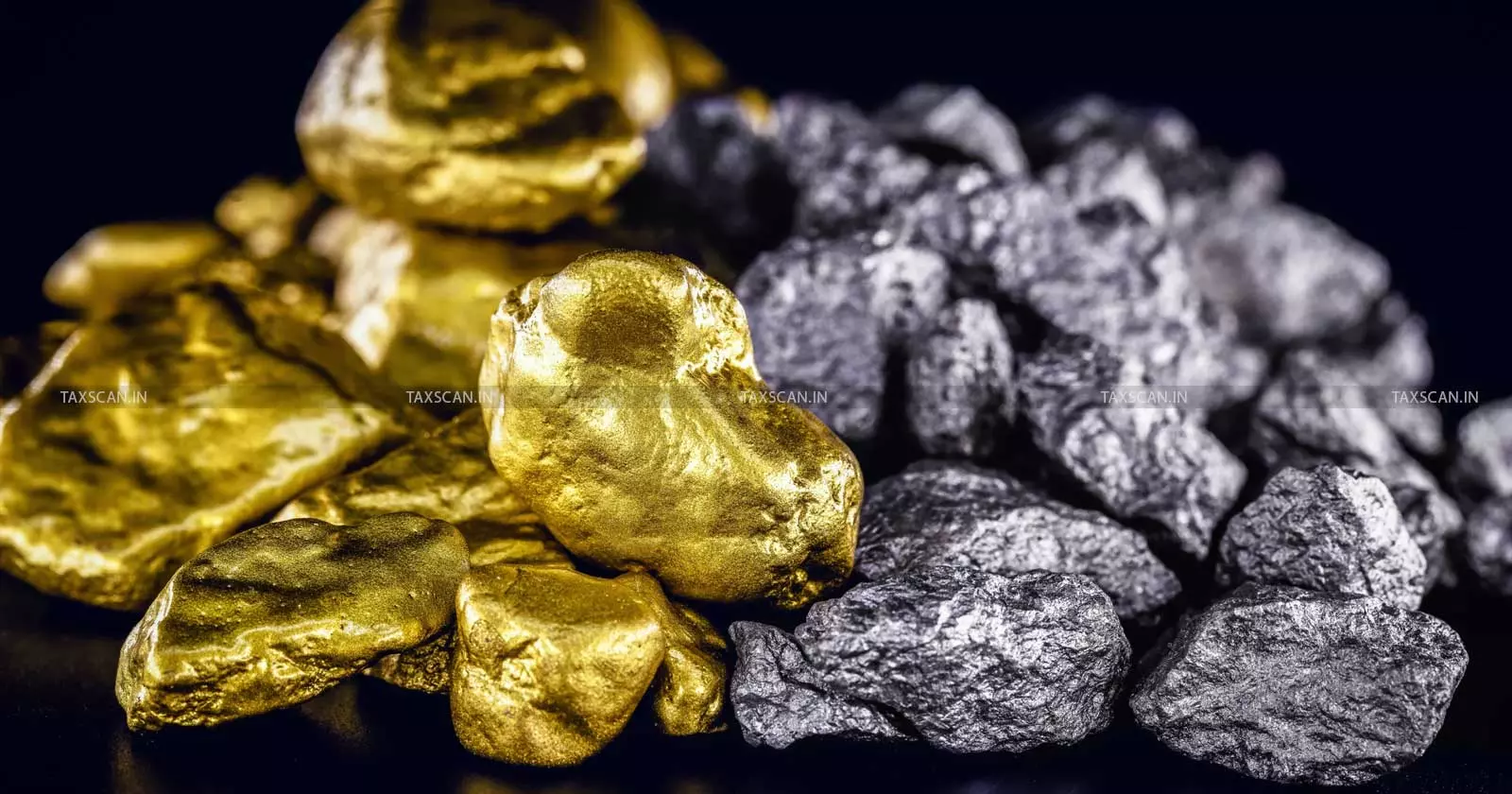Beyond Gold: The Metals Poised to Be Tomorrow's Investment Champions
The best metal investments for 2025 are silver, platinum, copper, lithium, and rare earth elements due to strong demand, supply constraints, and roles in energy transition and technology; however, individuals face significant limitations in directly holding rare earth metals, as these are typically accessible only through mining stocks, ETFs, or specialized funds rather than physical ownership, and they involve higher risks and market complexities

The precious metals investment landscape is experiencing a transformative shift in 2025, with investors looking beyond traditional gold investments to discover the next generation of metal champions. While gold has delivered exceptional returns of 26.3% in 2024, marking its strongest performance in 14 years, savvy investors are positioning themselves in alternative metals that promise even greater potential returns in the coming years.
The current metals boom is driven by a perfect storm of factors: a weakening U.S. dollar, geopolitical tensions, supply constraints, and most significantly, the global energy transition creating unprecedented demand for specific metals. This convergence of forces is reshaping the investment opportunities in ways that extend far beyond traditional precious metals holdings.
The Silver Revolution: A Precious Metal's Industrial Renaissance
Silver has emerged as the standout performer of 2025, surging approximately 38% year-to-date and significantly outpacing gold's impressive gains. Unlike gold's primarily store-of-value function, silver enjoys a unique dual role as both a precious and industrial metal, creating multiple demand drivers that support its bullish trajectory.
Industrial Demand Explosion
Silver's industrial applications are experiencing explosive growth, with the Silver Institute estimating that industrial demand could account for nearly 60% of total production in 2025. The metal's exceptional electrical conductivity makes it indispensable in green technologies, including solar panels, electric vehicles, and 5G infrastructure. Each electric vehicle requires significantly more silver than conventional vehicles, while renewable energy installations continue to drive unprecedented demand.
Supply Deficits Creating Pricing Power
The silver market is experiencing its fifth consecutive year of supply deficits, creating fundamental support for higher prices. This persistent imbalance, combined with ongoing supply challenges in major producing countries, has created a structural shortage that underpins the metal's price appreciation.
Price forecasts suggest silver could reach Rs 1.5 lakh per kg within 12 months, with Comex futures potentially advancing towards $45-$50 per ounce. Some bullish projections anticipate new all-time highs above $52.50, driven by continued industrial demand and investment flows into silver ETFs.
Platinum's Remarkable Resurgence
After years of underperformance, platinum has staged one of the most dramatic comebacks in the metals sector, surging nearly 80% in 2025 and outpacing both gold and silver. This remarkable performance reflects a fundamental shift in the platinum market dynamics.
Supply Constraints Drive Scarcity
Platinum's supply situation has become critically tight, with global production down 6% and South Africa experiencing its weakest output in 25 years excluding strike years. Inventories have fallen to their lowest levels in over a decade, while the market faces a projected deficit of 850,000 ounces this year.
The World Platinum Investment Council forecasts continued undersupply in 2025, which bolsters the metal's investment appeal. This supply crunch occurs precisely as demand remains resilient across multiple sectors, creating pricing power that platinum hasn't enjoyed for years.
Evolving Demand Profile
While automotive demand remains stable, platinum's appeal extends beyond traditional catalytic converter applications. Jewellery consumption in China and India is set to rise 11%, while strong bar and coin purchases support investor interest. Additionally, platinum's role in hydrogen technologies positions it favorably for the clean energy transition.
The Battery Metals Boom: Lithium, Cobalt, and Nickel
The electric vehicle revolution and energy storage boom have created unprecedented demand for battery metals, positioning lithium, cobalt, and nickel as critical investment opportunities.
Lithium: The Heart of Energy Storage
Lithium demand has reached extraordinary levels, with global lithium carbonate demand hitting 850,000 tonnes LCE in 2024, representing a 44% year-over-year increase. The price of 99.5% battery-grade lithium carbonate jumped to $9,276.48 per tonne in January 2025, reflecting the intense supply-demand dynamics.
Electric vehicle production is the primary driver, with global EV sales expected to exceed 13 million units by 2025. The supply chain remains constrained by production challenges and China's dominance in processing, creating opportunities for diversified supply sources.
Cobalt: Strategic Scarcity
The Democratic Republic of Congo's control over 70% of global cobalt supply creates significant geopolitical risk and opportunity. Indian consumption is expected to range from 70-100 tonnes per month, with substantial potential in chemical and battery manufacturing sectors.
Recent developments include Russia's announced silver purchases worth $535 million over three years for state reserves, highlighting the strategic importance of securing critical metal supplies.
Nickel: Industrial Powerhouse
Indonesia's dominance in nickel production, contributing approximately 50% of global output, creates both opportunity and supply chain risk. India's recent launch of its first nickel production facility at ICC in Ghatsila represents a significant step toward reducing import dependence.
Industrial Metals: The Infrastructure Play
The global infrastructure boom and green energy transition are driving exceptional demand for industrial metals, creating compelling investment opportunities in copper, aluminum, and zinc.
Copper: The Electrification Essential
Copper demand is experiencing unprecedented growth driven by electrification needs. A typical electric vehicle requires 80kg of copper compared to 20kg for conventional vehicles. Grid modernization and renewable energy deployment create additional demand layers, with copper prices forecast to rally to $11,000 per tonne by end-2025.
Supply constraints from declining ore grades and production challenges create a structural deficit. The average capital intensity for new copper mine development has increased to $15,000-$20,000 per annual tonne of production capacity, making new project development increasingly challenging.
Aluminum: The Lightweight Revolution
Aluminum's role in electric vehicles and renewable energy infrastructure positions it favorably for the energy transition. The metal's use in EVs, power transmission, and construction supports continued demand growth. Energy-intensive production creates regional advantages for low-cost power access, while recycling economics become increasingly attractive as environmental regulations tighten.
Zinc: Supply Squeeze Dynamics
Zinc inventories in London Metal Exchange warehouses have collapsed nearly 75% since April, hitting their lowest level in over two years. Production cuts from major smelters due to high energy costs compound the supply pressure, while China's growth targets ensure steady demand.
Rare Earth Elements: The Technology Enablers
Rare earth elements are experiencing renewed attention as critical materials for high-tech applications, clean energy, and defense systems.
Neodymium: Magnetic Excellence
Neodymium's exceptional magnetic properties make it irreplaceable in electric vehicle motors and wind turbine generators. As the green energy transition accelerates, neodymium prices have shown remarkable resilience, with current levels around 785,000 CNY/T representing a 45.64% increase.
Strategic Elements Portfolio
Other critical rare earths including dysprosium, terbium, praseodymium, europium, and yttrium offer specialized applications in defense systems, medical technologies, and advanced manufacturing. India's Rs 7,350 crore initiative to boost rare earth magnet production signals government commitment to developing domestic supply chains.
Critical Success Factors for Metal Investments
Supply Chain Diversification
The concentration of metal production in specific regions creates both risk and opportunity. China's dominance in rare earth processing (80% of midstream processing) and Indonesia's control of nickel production highlight the importance of supply chain diversification.
Technological Evolution
Advancing battery technologies, electric vehicle adoption, and renewable energy deployment continue to reshape metal demand patterns. The shift from internal combustion engines to electric powertrains creates winners and losers across different metals.
Geopolitical Considerations
Trade policies, export restrictions, and strategic reserve building by governments influence metal markets. Countries are increasingly placing export restrictions to enable domestic value chain development.
Investment Risks and Considerations
Price Volatility
Metals markets exhibit significant volatility due to supply disruptions, demand fluctuations, and macroeconomic factors. Silver's volatility exceeds that of gold, while industrial metals face additional cyclical pressures.
Regulatory Changes
Environmental regulations, mining permitting processes, and trade policies can significantly impact metal production and pricing. Companies must navigate complex regulatory environments across multiple jurisdictions.
Market Concentration
Heavy dependence on specific geographic regions for production creates supply chain vulnerabilities. Investors should consider diversification across different metals and geographic exposures to manage concentration risk.
The Path Forward: Strategic Positioning
The metals investment landscape of 2025 and beyond requires strategic thinking that extends far beyond traditional precious metals holdings. While gold maintains its role as a store of value, the next generation of investment champions lies in metals that serve multiple functions: store of value, industrial input, and technology enabler.
Silver's dual nature as precious and industrial metal positions it favorably for continued outperformance. Platinum's supply constraints and emerging applications create compelling value propositions. Battery metals offer exposure to the electric vehicle revolution and energy storage boom. Industrial metals provide infrastructure and electrification exposure. Rare earth elements enable high-technology applications and national security priorities.
Success in this evolving landscape requires understanding the interplay between traditional investment drivers and new technological and geopolitical forces reshaping global metal markets. The metals poised to be tomorrow's investment champions are those that combine scarcity with essential functionality in the modern economy.
The best metal investments for 2025 are silver, platinum, copper, lithium, and rare earth elements due to strong demand, supply constraints, and roles in energy transition and technology; however, individuals face significant limitations in directly holding rare earth metals, as these are typically accessible only through mining stocks, ETFs, or specialized funds rather than physical ownership, and they involve higher risks and market complexities.
Investment Implications
Investors should consider diversified exposure across the metals spectrum, balancing traditional precious metals with industrial and technology metals. The convergence of supply constraints, policy support, and structural demand growth creates an attractive environment for metals investments in 2025 and beyond.
The key is positioning ahead of the curve, recognizing that today's alternative metals may become tomorrow's essential holdings as the global economy continues its transformation toward electrification, digitalization, and sustainability.
Support our journalism by subscribing to Taxscan premium. Follow us on Telegram for quick updates


